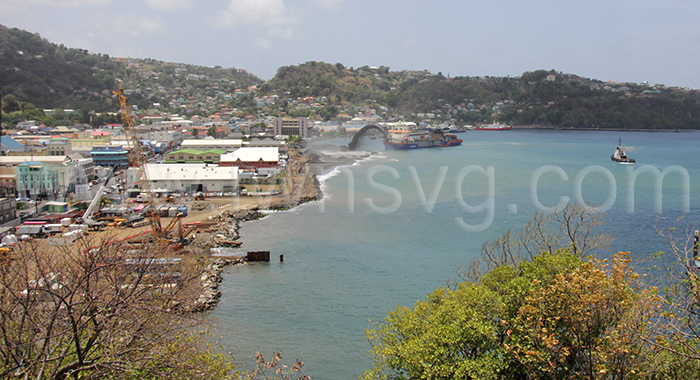By Observer
We wanted to address this question in our most recent piece, but due to its length, we decided to leave it for a follow-up. Based on the information presented so far, and the information in the public’s domain, one must wonder if the port project can be halted?
We recognised some of the reaction to the whole issue, where some were asking why would the CDB engage in this project and do nothing, if there was something untoward going on, or if all necessary checks were not done? We have pointed out some of those things that are of concern to the public.
For one, the ESIA (environmental and social impact assessment) does not address dredging of that magnitude of fill material necessary to reclaim the entire site. Further, the EMP (environmental management plan) that is supposed to address any risk or concern determined in the ESIA, did not address any mitigation measures for dredging for fill material to that extent.
Instead, what it addressed is dredging the harbour (Rose Place harbour) to deepen it, to accommodate certain vessels. That material — less than 20,000 cubic meters — would become part of the reclaimed area. Clearly, that is not enough material to reclaim the entire area, so a lot more must come from somewhere else.
The other dredging that it addressed, is dredging to maintain the area. As the current in the bay causes material to build up around the site, dredging must be done to maintain it.
What was also addressed is the importation of material and the testing of such material by the Public Health Department.
Those are the two actions that those two reports addressed. We also quoted from the CDB appraisal report where the same is addressed. None of these reports addressed dredging of vast amounts of material to use for reclaiming the site, not to the tune of thousands of cubic meters of material.
In fact, we shared with you exactly what the CDB appraisal report says. That is: “The land reclamation process will result in the loss of soft bottom flora and fauna due to the 640,000 m³ of fill required for this activity … local quarries have been deemed inadequate to supply such an amount, and therefore the fill will have to be imported. The contractor will decide on the source and quality of fill. A permit for the importation is required, and on entry, the material will be screened by the public health.”
While the CDB is stating 640,000 cubic metres, local authorities are stating it is 1.17 or 1.2 million cubic metres. What is the reason for this discrepancy? The CDB states that “topographic and the bathymetric surveys were used to accurately position the new port infrastructure and to estimate the quantity of reclamation material required”. How and why did the needed amount of material change?
The CDB also says that this part of the project will be covered by a grant awarded to the government of over US$32 million (17% of the project cost). On top of that, the government is now expected to receive EC$20 million for the dredged material.
With all this information, which appears to bear environmental concerns — among what appears to be inconsistencies and lack of all necessary studies — can the project be stopped?
Recall that in 2019, a local construction company — in a letter of objection — caused the CDB to rescind financing for river defence works at Yarabaqua? The government had to repay the CDB $142,000, after allegedly awarding the contract to a lesser qualified company. Evidently, it is not automatic that the CDB would get involved. It must be written to, like the local contractor did back in 2019 . Subsequently, we were told that the matter between the government and CDB was resolved.
The CDB — as it is stated in the appraisal report — requires studies and assessments, like the ESIA and EMP, before it approves any loan. It is fair for anyone to assume that those studies and assessments must be accurate. As we’ve stated, there is no information in any of these three reports that speaks to the dredging of thousands of cubic meters of material. What they addressed instead, is the importation of the fill material.
With all the information available, can the project be halted, if one were to write to the CDB for a review? According to the CDB report, “An SEP [Stakeholder Engagement Plan] inclusive of a GRM [Grievance Redress Mechanism] was developed to support participation and to keep all affected or with a stake/interest in the Project informed. SEP will provide opportunities for affected communities or parties to register project-related concerns and facilitate the timely resolution of any issues that may arise during project implementation.”
The opinions presented in this content belong to the author and may not necessarily reflect the perspectives or editorial stance of iWitness News. Opinion pieces can be submitted to [email protected].






